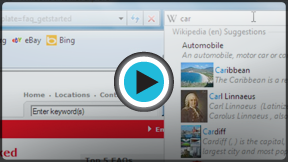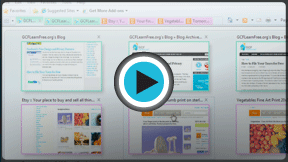Internet Explorer
Browsing the Web
Introduction
Internet Explorer 8 makes browsing the Web easy. In this lesson, we'll talk about using the address and search bars. You'll also learn how to use tabs, access your browsing history, and view your downloads.
If you don't have a lot of experience using a web browser, you may want to review our lesson on Browser Basics, which covers the basic points of web browsing in more detail.
Address and search bar features
Internet Explorer 8 has improved the Address Bar and Search Bar to make them function in a smarter way. Have you ever forgotten a previous web address or the full name of something you were searching for? The Address and Search bars now provide suggestions to help you find what you're looking for.
The smart Address Bar
The Address Bar assists you in recalling previously entered websites. As you enter your address, it will search across your History, Favorites, and RSS Feeds for matches. It highlights the matching characters in blue, making it easier to identify results at a glance.
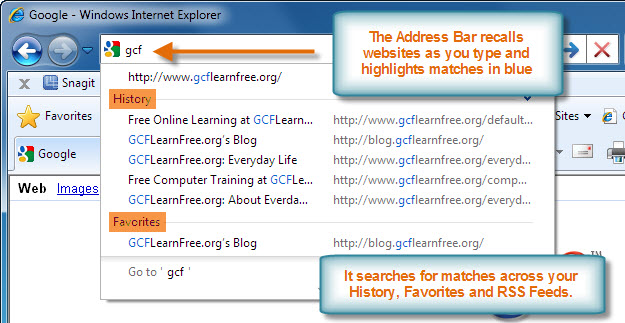 Smart Address Bar
Smart Address BarSearch Bar features
Search suggestions
Internet Explorer 8 has search capabilities that provide suggestions as you enter your search terms. If you see a search suggestion you like, you can click on it without having to finish typing. This can be quite convenient.
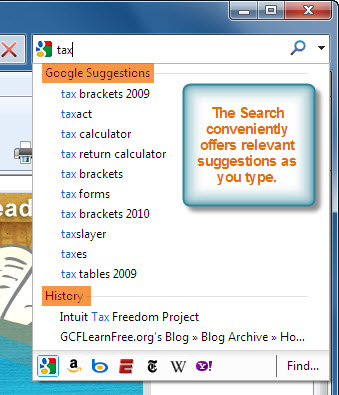 Search Suggestions
Search SuggestionsSome search providers like Bing, Amazon, and Wikipedia will show visual suggestions for you to choose from. Visual suggestions can offer you previews and answers all on their own.
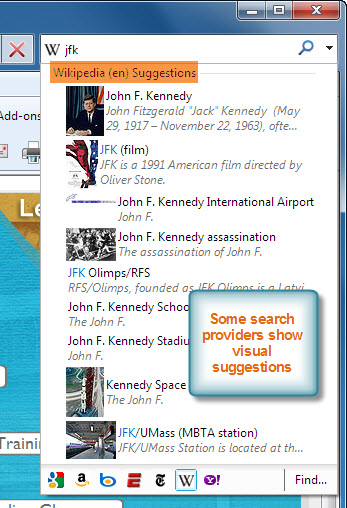 Visual Suggestions
Visual SuggestionsCustomize search providers
By default, the search provider in the search bar is the Bing search engine, but additional search providers can be added or changed as you desire. Maybe you prefer searching with Google or Amazon for shopping, or ESPN for sports news.
- Click on the drop-down button to the right of the search bar, then select Find More Providers.
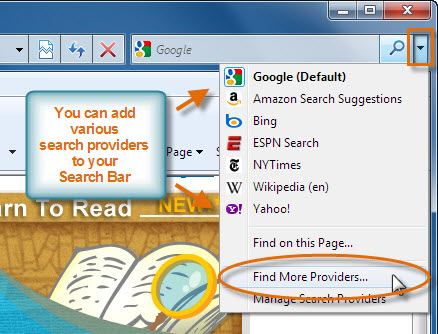 Add Search Providers
Add Search Providers - The Internet Explorer 8 Add-ons Gallery will display. Here, you can browse and select search providers to add to your search bar.
- Select a provider, then click Add to Internet Explorer. The search provider will appear in your Search Bar list.
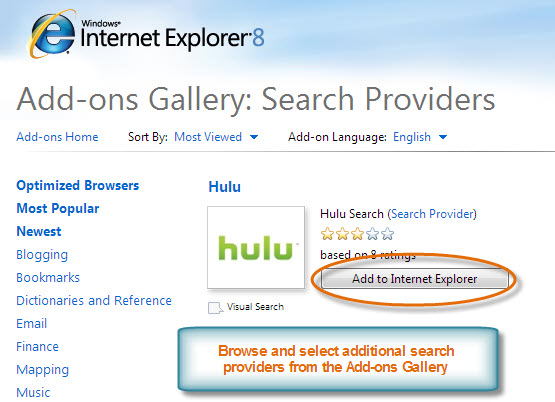 Add-ons Search Providers
Add-ons Search Providers - Once you have added the search providers you desire, their icons will appear when you click in the Search Bar. Simply select the provider icon you desire to conduct a search.
 Select Search Providers
Select Search Providers
Browsing pptions
Internet Explorer 8 includes several features to make browsing the Web more convenient, such as tabs.
Navigation buttons
Internet Explorer uses four buttons for navigation: the Back, Forward, Refresh, and Home buttons.
Next to the navigation buttons, Internet Explorer has a convenient Recent Pages drop-down button that lets you choose which page you want to recall. This eliminates the need to hit the forward and back buttons numerous times before you find the page you want. It also has an option for opening History to search further back in your browsing history.
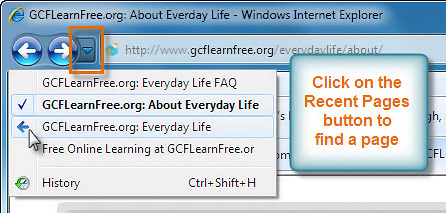 Recent Pages Button
Recent Pages ButtonBrowsing with tabs
Like all browsers, IE allows you to open new windows to view different pages. In addition, IE allows you to open multiple websites in the same window using tabs. Tabs are usually more convenient than opening several windows at the same time.
 Browser Tabs
Browser TabsTo open a new tab:
- Locate and click on New Tab.
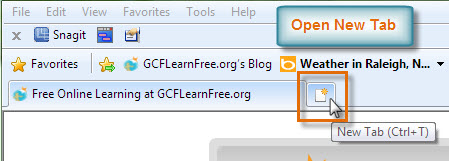 Opening a New Tab
Opening a New Tab - The What do you want to do next? page will appear with several options you can choose from. Otherwise, you can enter a new address or search to open the page you desire in a new tab.
 New Tab Page Options
New Tab Page Options
To make navigation easier, you can preview your tabs by clicking the Quick Tabs button and selecting the tab you desire.
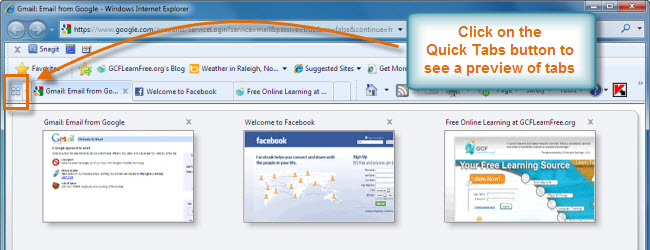 Quick Tabs Preview
Quick Tabs PreviewTab Groups
The Tab Groups feature color codes your related tabs and arranges them next to each other. In order to use Tab Groups, you will need to open a new page by right-clicking on the desired link and selecting Open in New Tab.
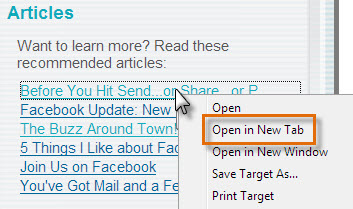 Open in New Tab
Open in New TabRelated pages will be grouped and color coded for easier access. You can see a list of the tabs by clicking on the Tab List drop-down button.
 Tab Groups
Tab GroupsFind on this Page
Find on this Page is a useful tool that allows you to locate search terms on a page.
To access Find on this Page:
- Click the drop-down menu in the Search Bar, then select Find on this Page. Alternatively, you can press Control+F on your keyboard.
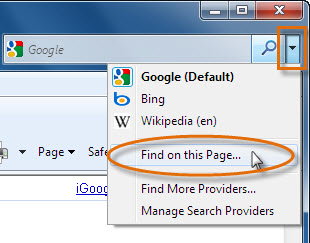 Accessing Find on Page
Accessing Find on Page - The Find on this Page tool is located above the page. In the Find: field, type your search term. As you type, matching characters will be highlighted in yellow on the page.
- Scroll through matches by clicking Previous or Next in the toolbar or by simply pressing the enter key.
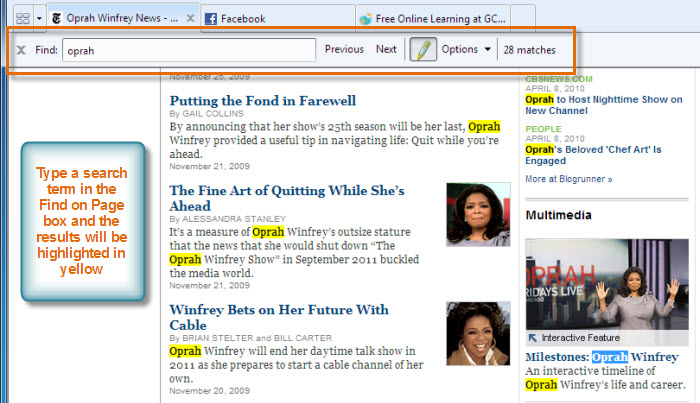 Find on Page Results
Find on Page Results
History features
Like all browsers, Internet Explorer saves your browsing history, which includes details and cookies from the sites you visit. You can search your history to find a previously viewed page or delete your history for the sake of privacy.
- To access your browsing history, click the Favorites button and select the History tab.
 Accessing History
Accessing History- In the Browsing History View, you can sort your history view by Date, Site, Most Visited, and Order Visited Today. To access Browsing History View, click the View By drop-down button, then select the desired option.
 Browsing History Options
Browsing History Options- Search History is another addition to the Browsing History View. Type a keyword in the Search For: field, then click Search Now to locate matching pages in your history.
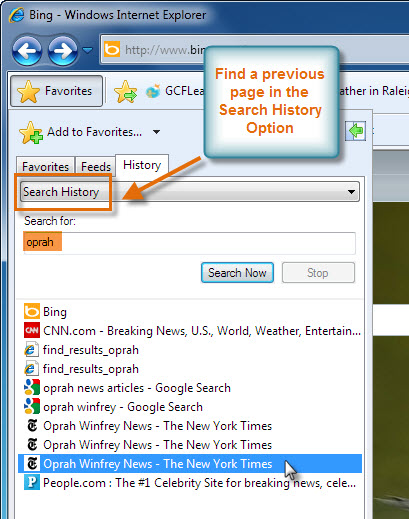 Search History Option
Search History OptionDelete browsing history
There may be times when you want to delete your browsing history for safety or privacy reasons. Perhaps you do not want others to view the pages you have browsed on your computer.
- Click the Safety command, then select Delete Browsing History from the drop-down menu.
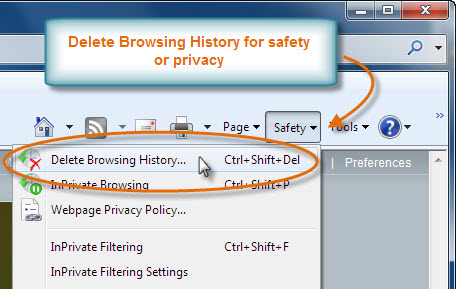 Delete Browsing History
Delete Browsing History - The Delete Browsing History dialog box will appear.
- Review and select the options you wish to delete from your browsing history. The most common are Temporary Internet Files, Cookies, and History. Internet Explorer 8 allows you to preserve the files and cookies from your Favorites sites while deleting those you do not want.
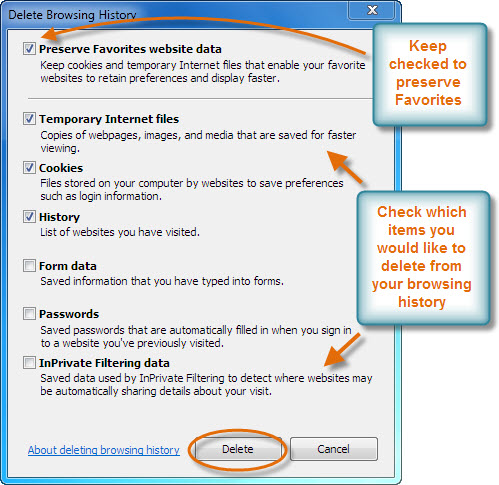 Delete Browsing History Window
Delete Browsing History WindowYou can go to the Tools command and select Internet Options to access Browsing history. From here, you can select Settings to customize options for your browsing history, including what details to record and how often to delete the history.
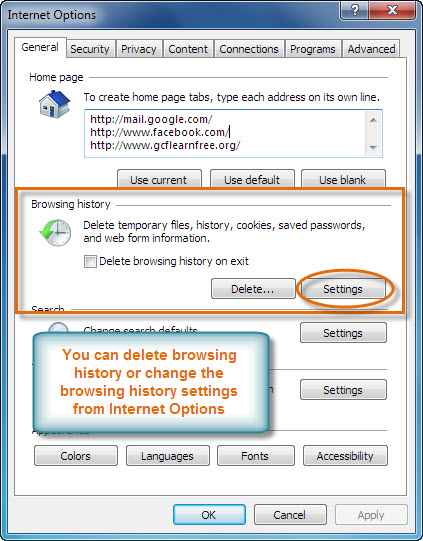 Browsing History Settings
Browsing History SettingsHow to download
At times, you will want to download files or save images from the Web to your computer. The process of downloading a file varies from site to site, so it may require some trial and error. Sometimes when you click on a link, it downloads automatically, but other times it just opens within your browser.
A good practice for successful downloading is to right-click the link and select Save Target As. By doing this, you will be able to choose the folder where the file is saved.
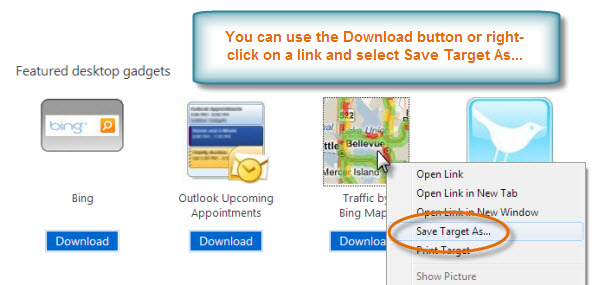 Downloading a file
Downloading a fileTo save images
- Right-click the image, then select Save Picture As.
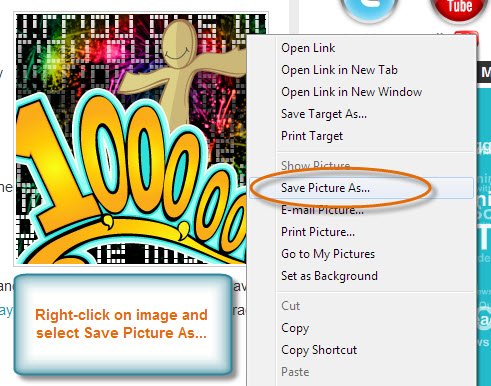 Saving a picture
Saving a pictureFor various reasons, many websites do not allow you to download content. For example, YouTube does not offer a way to download its videos.



